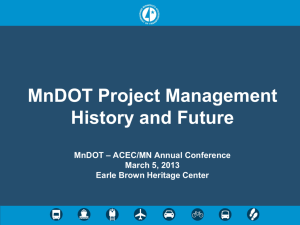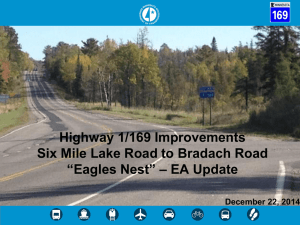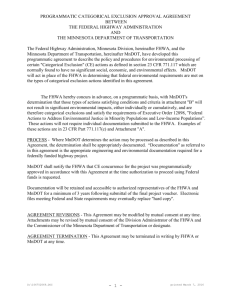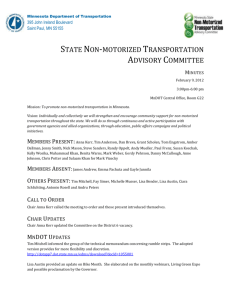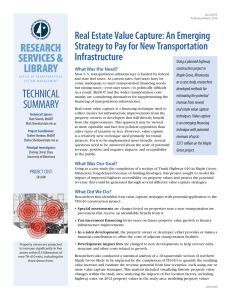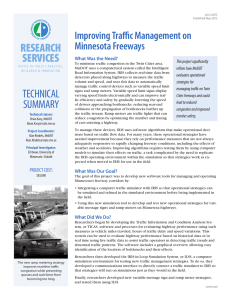RESEARCH SERVICES Measuring Transportation’s Impact on Quality of Life
advertisement
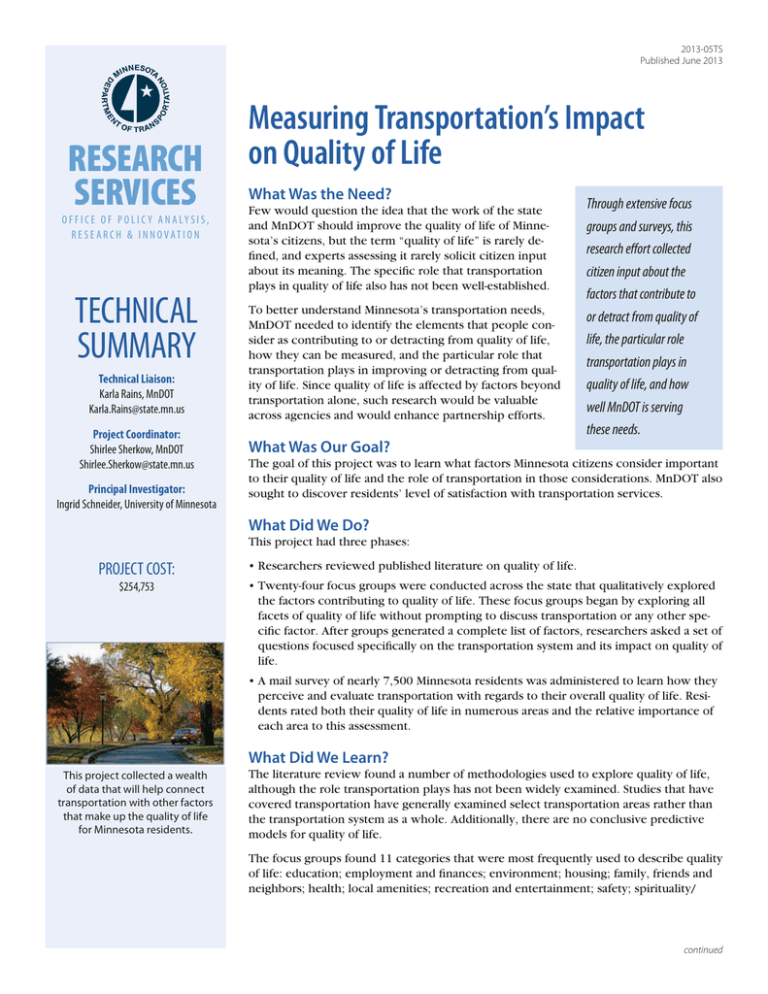
2013-05TS Published June 2013 RESEARCH SERVICES O F F I C E O F P O L I C Y A N A LY S I S , R E SE A R C H & I N N OVAT I O N TECHNICAL SUMMARY Technical Liaison: Karla Rains, MnDOT Karla.Rains@state.mn.us Project Coordinator: Shirlee Sherkow, MnDOT Shirlee.Sherkow@state.mn.us Principal Investigator: Ingrid Schneider, University of Minnesota Measuring Transportation’s Impact on Quality of Life What Was the Need? Few would question the idea that the work of the state and MnDOT should improve the quality of life of Minnesota’s citizens, but the term “quality of life” is rarely defined, and experts assessing it rarely solicit citizen input about its meaning. The specific role that transportation plays in quality of life also has not been well-established. To better understand Minnesota’s transportation needs, MnDOT needed to identify the elements that people consider as contributing to or detracting from quality of life, how they can be measured, and the particular role that transportation plays in improving or detracting from quality of life. Since quality of life is affected by factors beyond transportation alone, such research would be valuable across agencies and would enhance partnership efforts. What Was Our Goal? Through extensive focus groups and surveys, this research effort collected citizen input about the factors that contribute to or detract from quality of life, the particular role transportation plays in quality of life, and how well MnDOT is serving these needs. The goal of this project was to learn what factors Minnesota citizens consider important to their quality of life and the role of transportation in those considerations. MnDOT also sought to discover residents’ level of satisfaction with transportation services. What Did We Do? This project had three phases: PROJECT COST: $254,753 • Researchers reviewed published literature on quality of life. • Twenty-four focus groups were conducted across the state that qualitatively explored the factors contributing to quality of life. These focus groups began by exploring all facets of quality of life without prompting to discuss transportation or any other specific factor. After groups generated a complete list of factors, researchers asked a set of questions focused specifically on the transportation system and its impact on quality of life. • A mail survey of nearly 7,500 Minnesota residents was administered to learn how they perceive and evaluate transportation with regards to their overall quality of life. Residents rated both their quality of life in numerous areas and the relative importance of each area to this assessment. What Did We Learn? This project collected a wealth of data that will help connect transportation with other factors that make up the quality of life for Minnesota residents. The literature review found a number of methodologies used to explore quality of life, although the role transportation plays has not been widely examined. Studies that have covered transportation have generally examined select transportation areas rather than the transportation system as a whole. Additionally, there are no conclusive predictive models for quality of life. The focus groups found 11 categories that were most frequently used to describe quality of life: education; employment and finances; environment; housing; family, friends and neighbors; health; local amenities; recreation and entertainment; safety; spirituality/ continued “The ‘aha’ moment came when we realized there are more opportunities for partnerships that can help us build a sustainable transportation system with a more holistic approach.” —Karla Rains, MnDOT Director of Customer Relations Overall, Minnesota residents surveyed were fairly satisfied with MnDOT services, with 84 percent rating performance at least 5 on a 7-point scale. “This research truly provides an opportunity to understand what’s important to Minnesota in transportation—in all of its different facets.” —Ingrid Schneider, Professor and Director, Tourism Center, University of Minnesota Department of Forest Resources serenity/faith; and transportation. Participants noted how transportation was interrelated with other quality of life factors by providing access to them. When asked specifically about transportation systems, focus group participants identified seven primary factors that contribute to or detract from quality of life: access, design, environment, maintenance, mobility, safety and transparency. The survey, with a response rate of 45 percent, revealed that transportation was the ninth most important quality of life factor among 11 rated. All 11 areas, however, had an average score of at least 6.06 on a 7-point scale, where 7 was “very important.” Among the eight transportation-specific components of quality of life, accessibility, safety, maintenance and mobility were rated the most important factors, with each having an average score of at least 6.57 on a 7-point scale. No component had an average score below 5.60. Minnesota residents are generally satisfied with MnDOT performance; only maintenance and planning rated below 5.0 (slightly satisfied) on the 7-point scale. As one of the most important and lowest-rated areas, maintenance was identified as an area where MnDOT should concentrate its efforts. What’s Next? These findings provide a framework to help ensure that MnDOT is measuring itself in areas that matter most to citizens. While many relevant factors were already being tracked, additional performance measures are being added to MnDOT’s annual performance report as a result of this project, which will in turn affect transportation planning. This research has also been foundational to an education and outreach strategy to communicate to an increasingly diverse Minnesota citizenry the linkages found between transportation and quality of life, including the development outreach materials such as the “Keep Moving to Keep Ahead” video that explains the need for continued transportation investment. Produced by CTC & Associates for: Minnesota Department of Transportation Research Services MS 330, First Floor 395 John Ireland Blvd. St. Paul, MN 55155-1899 (651) 366-3780 www.dot.state.mn.us/research The data demonstrated opportunities for partnerships with other agencies. This is already manifesting itself in programs like the Corridor Investment Management Strategy, which approaches transportation planning from a holistic angle by bringing several agencies together to discuss needs within the same corridor. Research has been proposed to consider performance-based indicators across agencies and to perform initial research to explore connections between quality of life factors and safety. This Technical Summary pertains to Report 2013-05, “Quality of Life: Assessment for Transportation Performance Measures,” published January 2013. The full report can be accessed at http://www.lrrb.org/PDF/201305.pdf.


